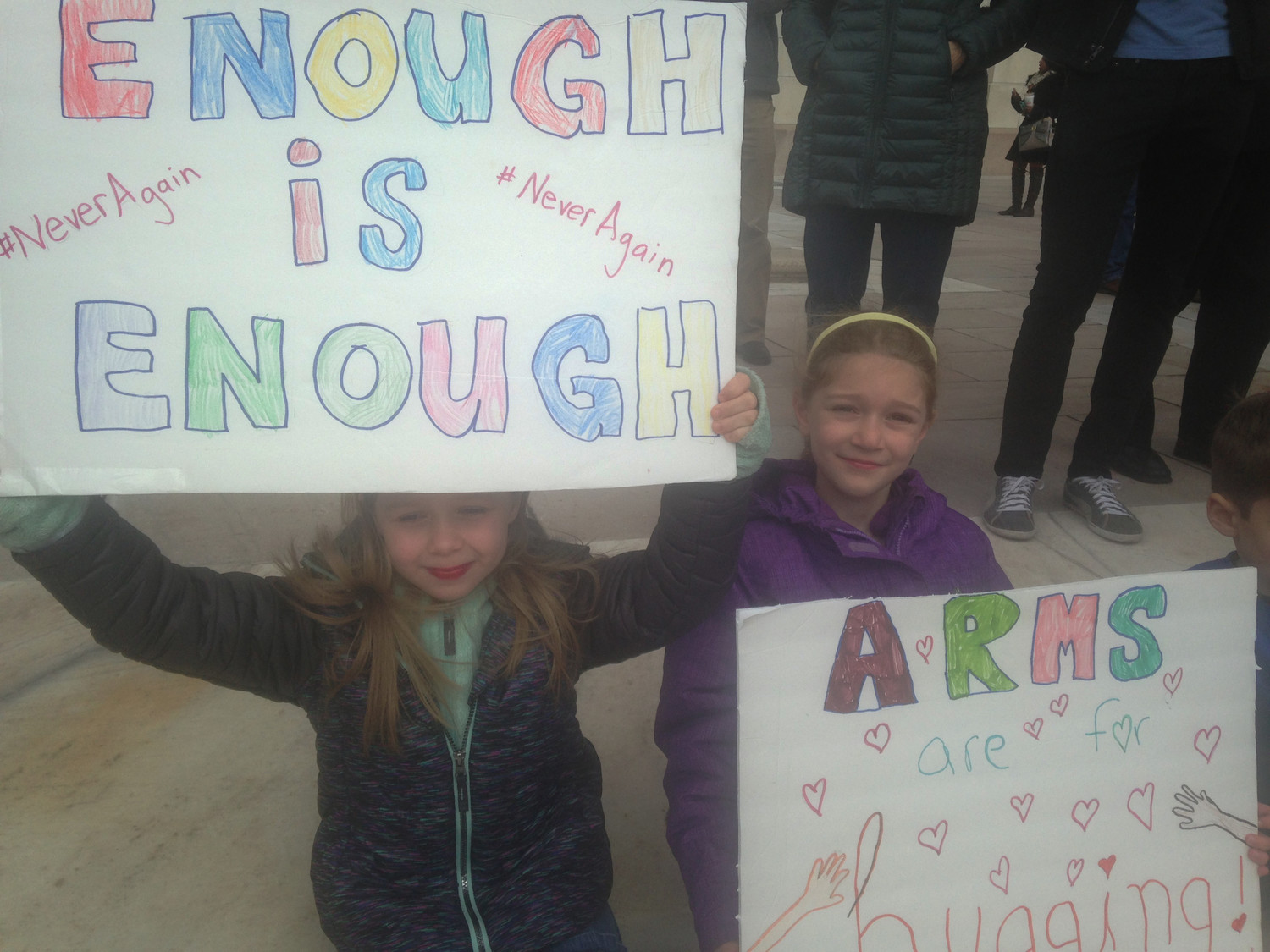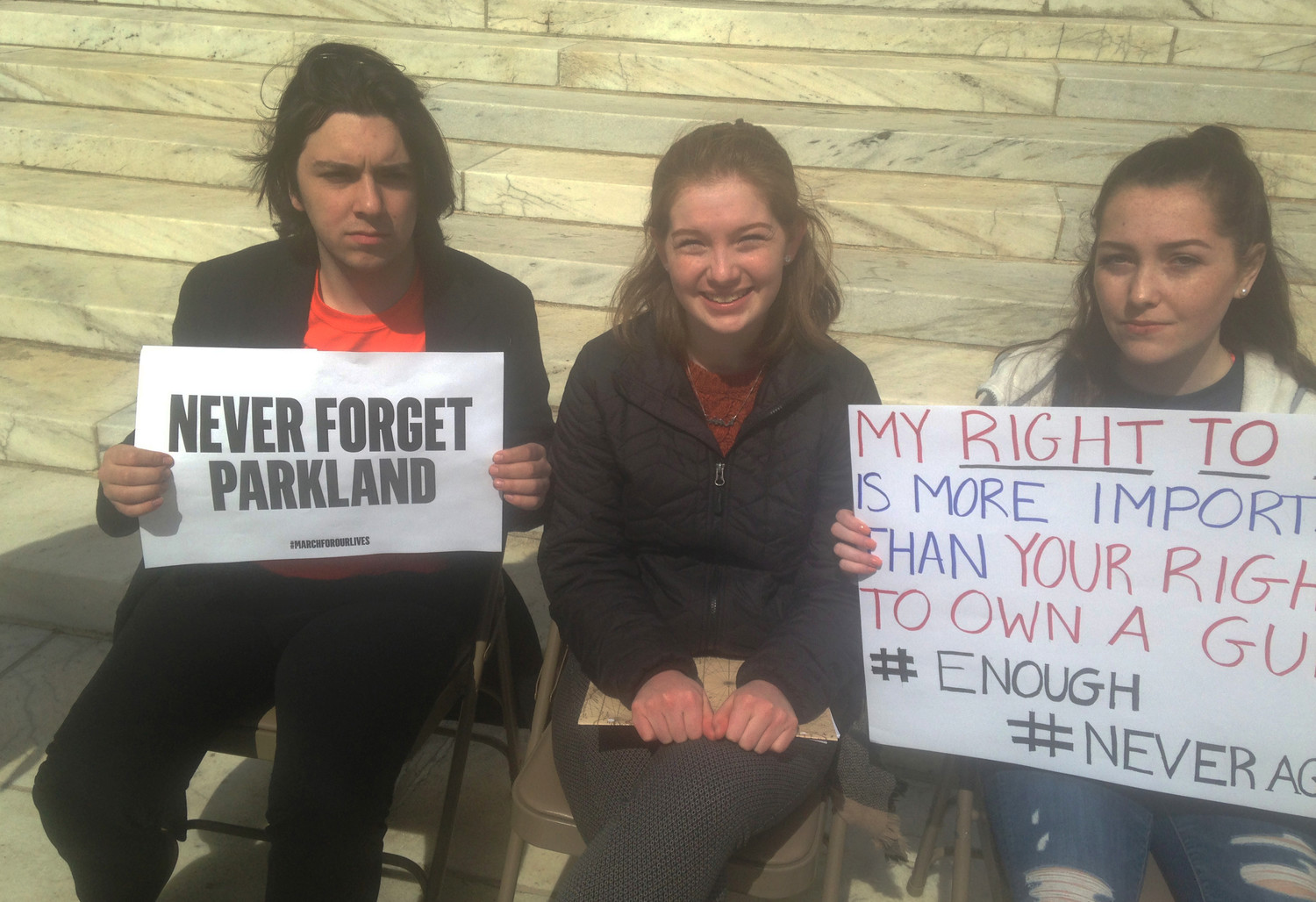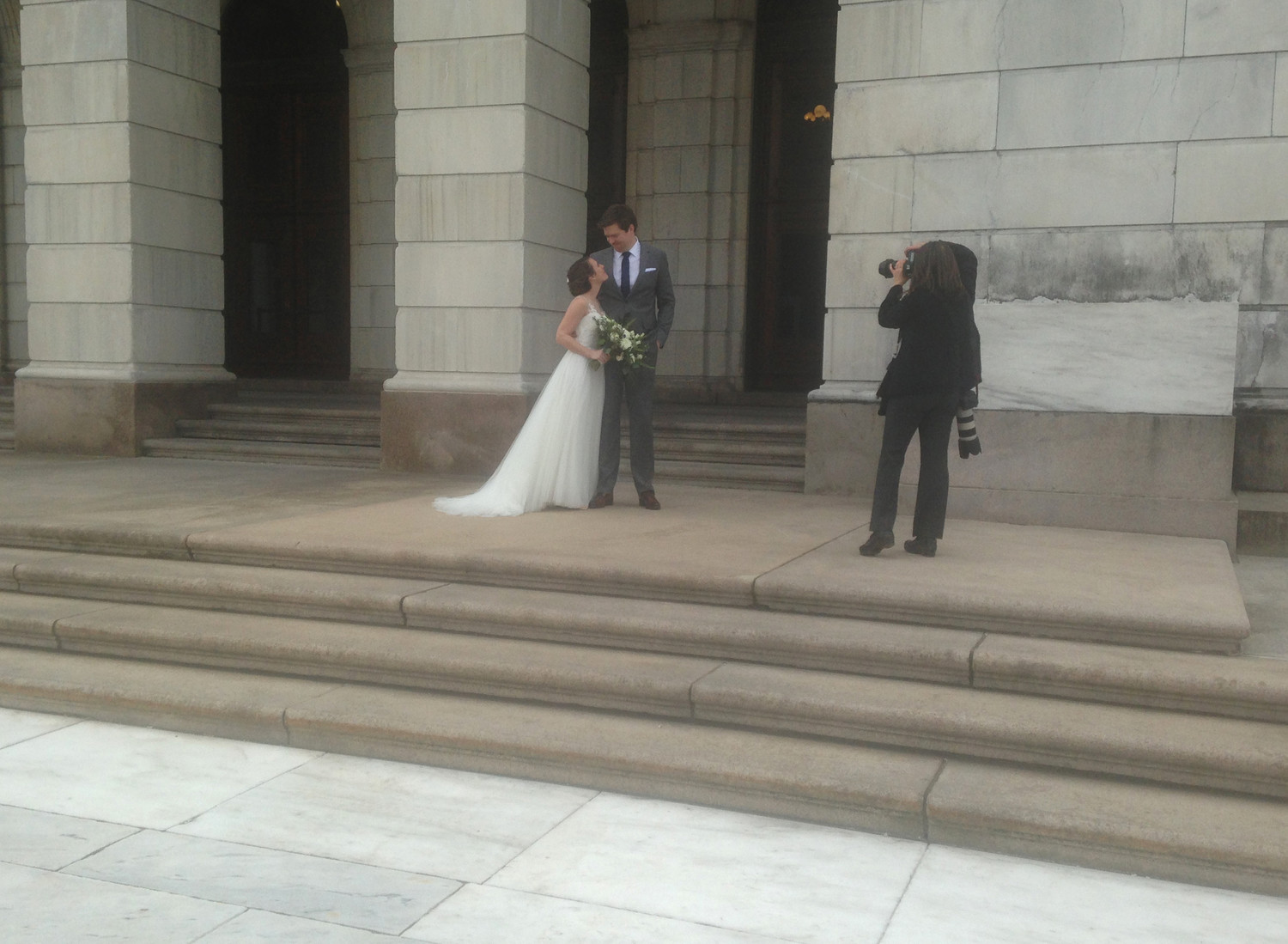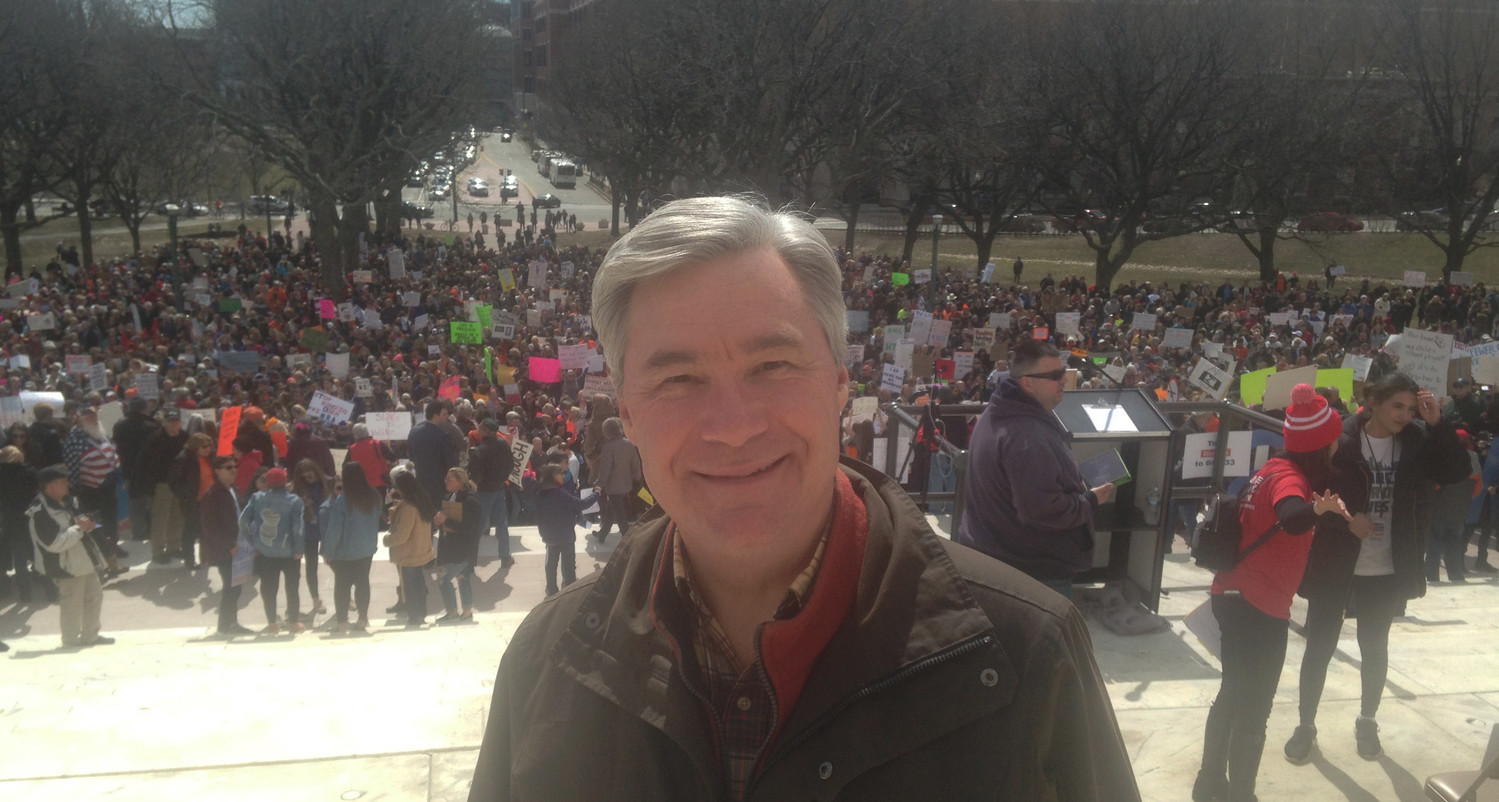Teach your children well
This is what democracy looks like; we are what democracy looks like
As we approach the 50th anniversary of the murder of Dr. Martin Luther King, Jr., which occurred on April 4, 1968, the words King wrote from the Birmingham, Ala., jail in 1963 still resonate: “We know through painful experience that freedom is never voluntarily given by the oppressor; it must be demanded by the oppressed. Frankly, I have yet to engage in a direct action campaign that was “well timed” in the view of those who have not suffered unduly from the disease of segregation.
“For years now I have heard the word ‘Wait!’ It rings in the ear of every Negro with piercing familiarity. This ‘Wait’ has almost always meant ‘Never.’ We must come to see, with one of our distinguished jurists, that ‘justice too long delayed is justice denied.’”
PROVIDENCE – The call and response orchestrated by the Extraordinary Rendition Band with the crowd of at least 3,000 attending the March For Our Lives rally on Saturday afternoon, March 24, on the lawn in front of the State House, captured the extraordinary moment: “This is what democracy looks like,” answered by, “We are what democracy looks like.”
Indeed, the rally was very much a call and response event, led by the articulate, passionate voices of the students who spoke, then were answered by the diverse crowd cheering them on, placards and signs waving, reciting the gospel of 2018: Enough is enough.
The question was: were the leaders of the R.I. General Assembly listening?
The rally in Providence, like its sister events in more than 830 communities across the U.S., was organized and led by students. The march in Washington, D.C., drew more than one million people, according to news reports. The honesty and wisdom of the student voices seemed to cut through much of the verbiage and obfuscation of the politicians and pundits alike.
The extended sounds of silence by Emma Gonzalez, one of the high school student leaders from Parkland, Florida, capturing how long it took for the gunman to kill 17 students and teachers at her high school, was as eloquent, dramatic and palpable as any of the words spoken.
“Since the time that I came out here,” Gonzalez said, as reported by CNN, “it has been 6 minutes and 20 seconds. The shooter has ceased shooting and will soon abandon his rifle, blend in with the students as they escape and walk free for an hour before arrest.”
Elected officials speak out
Here in Providence, in addition to the student speakers, there were also brief remarks from a number of elected officials, including: Gov. Gina Raimondo, U.S. Sen. Sheldon Whitehouse, U.S. Rep David Cicilline, U.S. Rep. Jim Langevin, Providence Mayor Jorge Elorza, state Rep. Aaron Regunberg, and R.I. Secretary of State Nellie Gorbea. [For a more complete video reporting of what was said by the students and the politicians, go the link below to the story by Steve Ahlquist from UpRiseRI.com]
How it changes the political equation at the State House or in Congress remains to be seen, where the NRA is still a powerful lobby with plenty of money to spend. The question remains: How will the voices of students translate into electoral politics in the 2018 elections? Will the legislative leaders in Congress and in the R.I. General Assembly allow a vote to be held on the proposed gun control legislation now pending? Good questions.
Snapshots from the rally
There were hundreds of families that participated in the rally, grandparents and parents and children, in addition to the students, many captured on Twitter and on Facebook posts.
On the steps on the State House, for instance, ConvergenceRI bumped into Mike Raia, communications director for Gov. Raimondo, accompanied by his young daughter. Also, Lee Clasper-Torch, men’s engagement coordinator with the R.I. Coalition Against Domestic Violence.
On the other side of the State House, far removed from the boisterous rally, a young just-married couple posed for wedding photos, as their photographer directed them through a number of poses. Would the rally and the wedding photo session converge in their wedding album? [See third photo above.]
When the Extraordinary Rendition Band played its first song, “Harriet Tubman,” the trumpet, trombone and saxophones converged on the plaintive musical chorus, without words, as the crowd swayed. ConvergenceRI knew the lyrics: “Come on up, I got a lifeline/come on up to this train of mine/She said her name was Harriet Tubman/And she drove for the underground railroad.”
Were the students a new generation of abolitionists, fighting slavery to gun violence? Did they know who Harriet Tubman was? Good questions.
Leaving the rally, ConvergenceRI found himself singing another song to himself, trying to remember the lyrics from the Bob Dylan song from 1964, “The times they are a-changin’,” but could only recall the opening lines: “Come gather round people wherever you roam, and admit that the waters around you have grown…”
Later, looking up the lyrics online, the third stanza seemed most appropriate:
Come senators, congressmen
Please heed the call
Don’t stand in the doorway
Don’t block up the hall
For he that gets hurt
Will be he who has stalled
There’s a battle outside and it is ragin’
It’ll soon shake your windows and rattle your walls
For the times they are a-changin’
Come mothers and fathers
Throughout the land
And don’t criticize
What you can’t understand
Your sons and your daughters
Are beyond your command
Your old road is rapidly agin’
Please get out of the new one if you can’t lend your hand
For the times they are a-changin’









